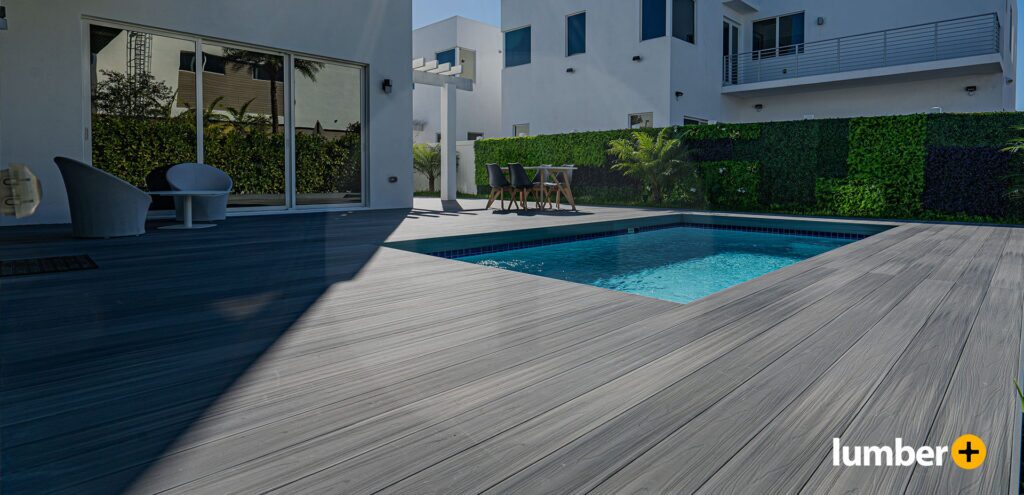
There are many important decisions to make when it comes to building a deck. However, a common one is whether you should construct it out of timber or composite wood decking. There is a lot to know about both options. Today we will be talking about composite decking, which carries its own set of questions.
Continue reading to learn everything a person should know before deciding to build a composite deck.
Different Types of Composite Decking
While composite decking is the heading for the type of material, there are multiple types of composite decking, with these being:
Capped Composite
The most common type of composite deck board used these days is called Capped Composite. These boards consist of an inner core of WPC, which is then covered by a polyurethane sleeve on one or all sides. The different construction helps to make it more durable, moisture resistant, and less prone to stains, warping, and insect damage.
Wood polymer composite, or WPC, was an old form of decking composed of a mixture of plastic and wood fibers. Some people also sometimes refer to this type as “non-capped.” It is now an outdated form of composite compared to current materials and is not readily available. It is more likely to fade, warp, and stain.
Plastic
There are also boards made completely out of polyvinyl chloride, or better known as PVC. These are technically no longer composite deck boards, but they are sometimes still referred to as such.
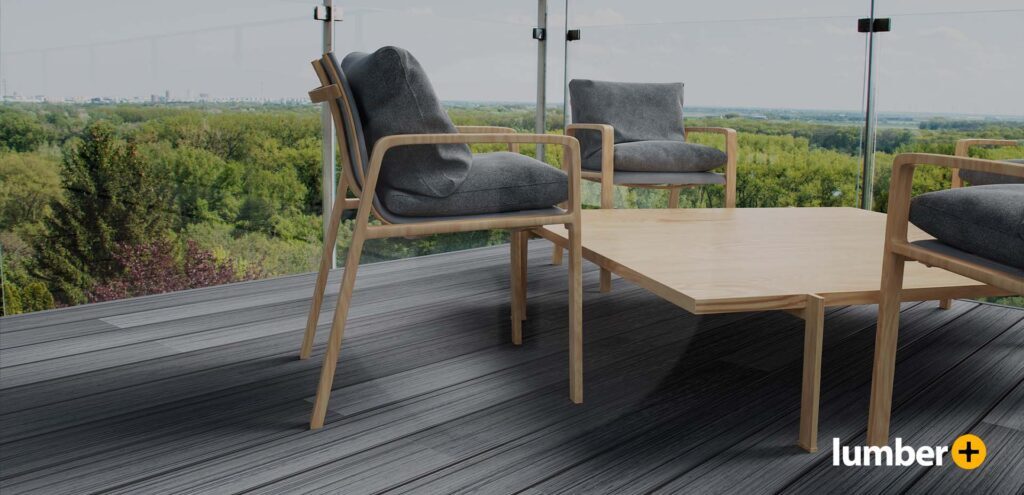
Lumber Plus carries all the different types of composite decking mentioned above, and from all of the leading brands in the composite decking industry. Feel free to browse our various offerings on the site.
Types of Boards
There are two types of composite decking boards, with these being hollow and solid. Both of these types of boards have their pros and cons, which we detail below.
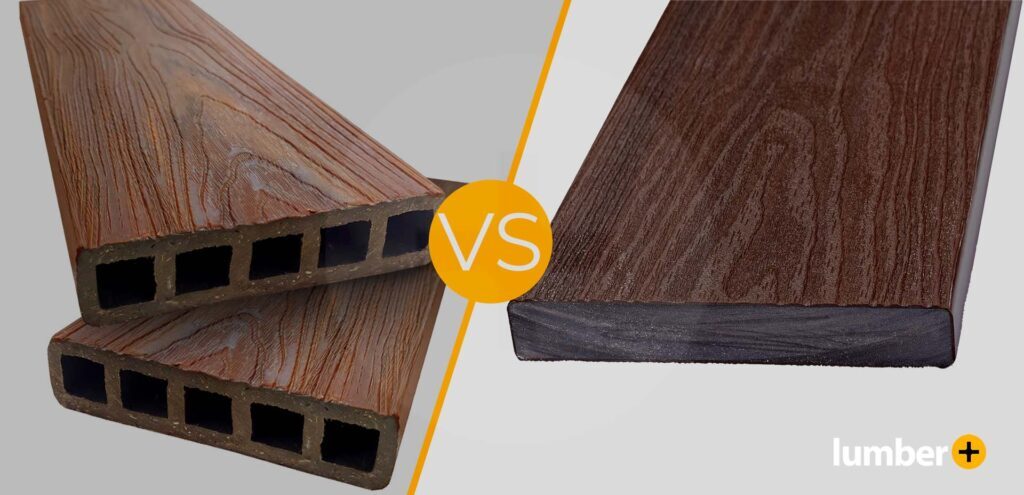
Hollow Board Pros
- Weight – As the name implies, hollow composite decking boards have spaces or channels that run through them. This makes them much lighter than hollow boards and easier to manage for those building the deck by themselves.
- Cost – Hollow boards tend to be much cheaper than solid boards.
- Less Affected by Weather – The hollow spaces within these boards make them more able to expand and contract with the weather, which lessens the chance of them warping.
Lumber Plus carries an excellent hollow board option. EcoDuo is great for many deck projects.
Hollow Board Cons
- Caps – Hollow boards typically require a cap to be placed on the end. These caps are often different materials and may not look the way that people would like them to. Also, they are not always watertight, which raises the risk of water damage and internal decomposition.
- Durability – Hollow boards are often thin, making them easier to damage and make more noise when walked on. This can make them a good choice if the deck is primarily for sitting outside, but they are not a great option for hot tubs or other heavy appliances.
Uniform – Hollow boards tend to look quite uniform and do not have much variation. It may be a downside for those who prefer the look of natural timber.
Solid Board Pros
- Strength – Solid composite deck boards are much stronger than hollow boards, as there is no space within that makes it easier for them to flex or bend. This makes them a better option if there will be a lot of weight on the deck, such as a hot tub.
- Aesthetic – Solid boards typically resemble natural woods much more than hollow boards. In addition, they come in a wide variety of grains and colors to choose from.
- Maintenance – The higher strength of solid composite boards makes them easier to maintain, as they will be less likely to warp, stain, or scuff.
Here at Lumber Plus, we have several different options for solid composite deck boards, including Trex, TimberTech, Fiberon, and Norx.
Solid Board Cons
- Cost – Probably the largest con about solid boards is that they are typically more costly than hollow types.
- Weight – Solid composite boards are noticeably heavier than hollow boards, which can make it more difficult when someone is building the deck by themselves.
Expansion – Being that solid boards contain higher amounts of wood in their composition, heat and weather are more likely to affect them.
Composite Deck Board Profiles
After deciding on general appearance and color, the next step is to choose a profile type. There are 5 different profiles for composite decking boards. The profile type will play a large role in the ease and method of installation.
- Solid – A solid profile is great because both sides of the board can be used. They can be installed using a hidden fastener system or screws.
- Scalloped – Scalloped boards are nearly the same as solid boards, except only one side is usable. This can often save on the cost of building the deck.
- Grooved – Grooved boards have a groove that runs along both sides. This is to fit a hidden fastener system, which means that no screws will be showing, but it will be more expensive than normal screws.
- Open Flange – Open flange boards are hollow and have slots that are designed to accommodate a hidden fastener system.
- Hollow – This profile is similar to the open flange, except that screws or a hidden fastener system can be used to install them.
Is Composite Decking Better Than Pressure Treated Decking?
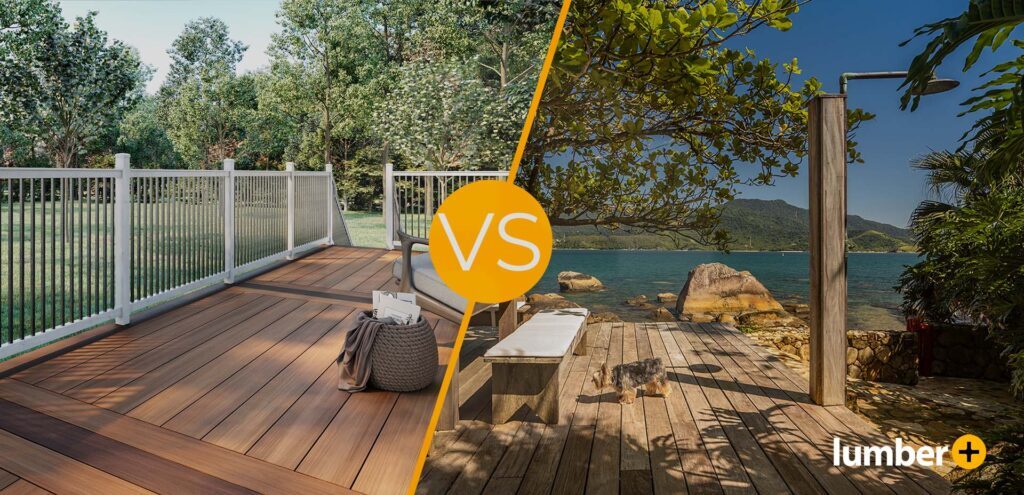
Realistically, the debate between natural timber or pressure treated decking comes down to the individual and their preferences. If aesthetics are the primary factor, then there will be far more options to choose from with composite decking.
Then comes the matter of maintenance. Natural timber will only continue to look good and last if you maintain it well. On the other hand, composite is very low-maintenance to keep looking nice. Composite decking tends to also be much more durable than commonly used pressure treated decking, making it less likely to warp, scratch, and more.
LumberPlus is Here for All of Your Composite Decking Needs
If you are looking for a one-stop shop for all of your composite decking needs, then LumberPlus is here to help. We have more inventory than anyone in North America and we work to keep our prices competitive. Feel free to browse our offerings and contact us at (786) 206-8899 if you have any questions or would like to order by phone.





